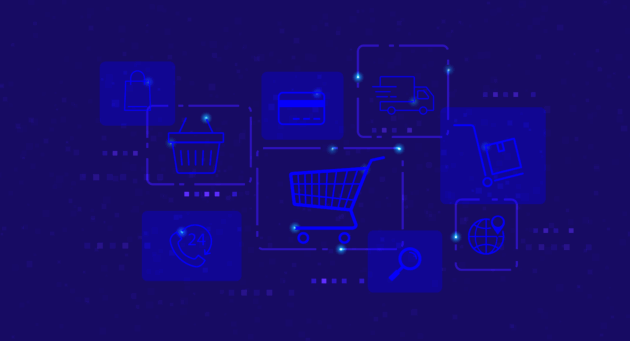Like it or not, Chrome’s third-party cookie could be no more by the end of 2024. Digital advertising has already had some practice with the scrapping of cookies on Safari and Firefox, but the real test will come at the end of the year—if all goes to Google’s plan.
Google’s deprecation of cookies will alter the foundations of how digital advertising works. Advertisers, publishers, and data providers will have to adapt after years of reliance on third-party cookies for identification, targeting, measurement, attribution, and personalized ads.
How to prepare for the cookieless future with Criteo
At Criteo, we’ve developed a multi-pronged strategy which maximizes addressable coverage through interlocking solutions: first-party data, Privacy Sandbox, and access to closed environments like retail media onsite and social. You can learn all about our evolving strategy at our Addressability Hub.
But another term you might have heard is “alternative IDs”. So, what are they exactly? And how do they stack up against other cookieless solutions?
What is an alternative ID?
An alternative ID is a browser-based technology which seeks to emulate the functionality of the third-party cookie in a privacy-safe way.
The existing alternative IDs can be broadly separated into two camps: deterministic and probabilistic.
- Deterministic IDs rely on personally identifiable information (PII) about a user, usually in the form of an email address. The user’s email address is hashed to make the ID anonymous and protect the privacy of the user. These IDs still operate based on user consent, which tends to be obtained through the sign-in process, and the preferences set by the user—the latter much the same as many of the third-party cookie permissions received under GDPR. However, it’s important to note that scale is a big issue for deterministic IDs, because they rely on publishers and advertisers gaining an authenticated registration from their first-party audiences. This is where an established network, like Criteo’s First-Party Data Network, can come in very handy.
- Probabilistic IDs look to approximate the identity of users without having to rely on any first-party data being collected. They use a range of signals across multiple channels to effectively provide their best guess for who a user might be. These data points can include things such as: IP address, device type, screen resolution, and operating system. While probabilistic IDs can deliver more scale, there can be data inconsistencies, and it can also be difficult to connect people across different devices. Some of these solutions also rely on fingerprinting, which combines device attributes to create a unique identifier. Fingerprinting doesn’t go down very well with Google, Apple, or Mozilla, because it allows users to be tracked even when they choose not to be—and is a massive breach of privacy.
The main alternative ID solutions
Let’s take a closer look at some of the main cookieless identity solutions on the market today.
Deterministic IDs
Hashed Emails (HEMs)
Hashed Emails, or HEMs, are an encrypted version of a user’s email which can be used as a unique cookieless identifier across devices. Because people rarely change their email address, HEMs are one of the most reliable and persistent alternative IDs available.
On a technical level, HEMs work by hashing a user’s email address using secure SHA256 and SHA256(MD5) algorithms. These IDs can then be shared by publishers in the bidstream and targeted by buyers on the demand side with a superior match rate to other IDs—up to 83% in some cases.
Unified ID (UID) 2.0
One of the better known alternative IDs is Unified ID (UID) 2.0—an industry initiative originally led by The Trade Desk before being handed over to Prebid. UID2 requires users to provide consent via their email address before an identifier can be created.
The user’s email address is converted into an alphanumeric key which is then encrypted and assigned a different value every time it enters the bidstream. These UID2 ‘tokens’ are stored by publishers, SSPs, and single sign-on providers.
The solution is being tested in the US and Canada, but there are doubts whether it will satisfy GDPR in Europe.
RampID
RampID is LiveRamp’s third-party cookie alternative. It works by deterministically matching offline PII and online devices to people-based IDs.
User IDs are created using a combination of third-party behavioral data, first-party data, and offline data. Each individual is assigned a cross-device anonymous identifier, or ‘RampID’.
The RampID solution also plays a key role in the Advertising ID Consortium, which is an independent entity made up of ad tech companies, delivering an open identity solution to the digital advertising ecosystem.
SharedID
In addition to operating UID2, Prebid also has SharedID. This solution generates unique first-party identifiers that can be used by publishers to identify unique users and attach interest attributes to those users. These IDs are stored as first-party browser cookies or in browser local storage.
Advertisers that receive the encrypted IDs can use it to gain information about user visits to the specific site housing the IDs.
Probabilistic IDs
ID5
The ID5 ID solution, available as part of the IdentityCloud suite of solutions, is a probabilistic identifier built on a number of different signals, like IP address, timestamps, page URLs, and so on. These IDs are then shared by publishers with their ad tech partners and used by advertisers for targeting and measurement.
The ID5 ID is backed up by the ID5 Partner Graph, which keeps track of the connections between IDs across platforms and devices, with the goal of delivering better match rates.
Panorama ID
Lotame’s Panorama ID serves to deliver “privacy-compliant, rich, pseudonymized data, [with] an average of 200+ behavioral attributes”.
It connects device identifiers, associated individual behaviors, and privacy choices into a single view, and is freely accessible for all within digital advertising. IDs are built using inputs from web, mobile, CTV, and customer-specific IDs.
Hybrid Solutions
LiveIntent NonID and Authenticated Bridge
The LiveIntent Identity Graph combines machine learning with real-time signals, meaning it uses both probabilistic and deterministic data to create its identity graph. It’s built and authenticated each day through organic connections from email. The identity graph uses LiveIntent’s nonID data processing service to bridge IDs via an active, encrypted email address.
LiveIntent also has its Authenticated Bridge solution, which uses email to ‘bridge’ identity across the programmatic ecosystem by placing ‘LiveTags’ in emails that register actions, and create authenticated, hashed email addresses.
Audigent Hadron ID
Audigent’s Hadron ID is another example of using both deterministic and probabilistic identity, combining the two with the promise of transforming real-time audience identification, and real-time header bidding. Data pushed into publisher bid requests includes first-party data, contextual data, site-level data, and more.
Hadron promises privacy compliance by ensuring that user and site-level data is never shared with third parties or stored.
Which alternative ID solution is best?
The truth is that there isn’t actually a one-size-fits-all answer to that question—and there probably never will be.
It’s likely you’ll need a combination cookieless identity solutions, alongside Google’s Privacy Sandbox, contextual tools, and first-party data, to maximize the results of your advertising in the post-cookie age.
It’s important that you find a partner that’s willing to test out a variety of ID solutions to figure out which ones work best for you. Just because one business benefits from using a particular combination of solutions, doesn’t mean your business is going to be the same.
You should also be looking to use third-party alternative IDs in conjunction with first-party data and contextual solutions, which are both set to play a massive role in the post-cookie world as well.
To learn more about how to prepare for the cookieless future with Criteo, check out our dedicated Addressability Hub.


















